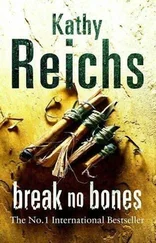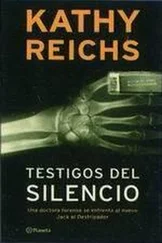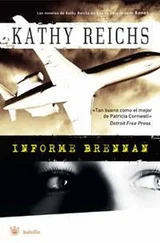“Mr. Marchant?” I called.
No response. Of course not. The shooter was wearing earmuffs.
I waved an arm over my head. He noticed our presence, set down his rifle and headgear, and strode over to greet us.
The man was tall, with pale skin, hazel eyes, and light brown hair. Younger than I’d expected—no more than thirty-five—he had the wiry physique of a long-distance runner. He wore orange-tinted glasses and jackboots.
“Mr. Marchant?” I repeated.
“Call me Eric.” He extended a hand. “You must be Tory. Hope you don’t mind, but I thought I’d get in some practice this morning. I don’t get out here too often.”
Suddenly Ben stiffened. Without warning, he lurched sideways and puked noisily in the bushes.
The rest of us skittered back in surprise.
Damn it, Ben. Not now! This guy works for the police .
Ben wiped his mouth and retreated toward the parking lot. “Sorry. I’m not feeling—” He broke into a trot and disappeared into the woods.
My gaze whipped to Marchant.
“Your friend looks a little … worse for wear.”
Shelton lowered his eyes. “I’ll, uh, make sure he’s okay. You coming, Hi?”
“Heck no.” Hi pantomimed holding a machine gun. “I wanna see some firepower.”
“Suit yourself.” Shelton hurried after Ben.
“Please excuse them.” I donned my most trustworthy face. “There’s a bug going around school.”
“A bug. Of course.” Marchant let the matter drop. “Did you bring the firearm you found?”
“Yessir.” Tapping the bag on my shoulder.
“Great.” He gestured to where he’d been shooting. “Let’s have a look.”
Marchant wasn’t what I’d expected. On the phone I’d imagined a bookish, squirrely type. This guy was clearly an outdoorsman.
Tucked inside Marchant’s stall was a veritable arsenal. Three pistols. A shotgun. Two more hunting rifles. And some automatic bullet-spitter whose name I couldn’t guess.
Hi’s elbow jabbed my ribs. “On the end,” he whispered. “That’s an AK-47.”
“You know your guns, young man.”
Marchant looked at me expectantly. Taking the hint, I unzipped my bag and removed the golf course weapon and slugs.
Marchant’s lips pooched out. “Now isn’t that an odd piece.”
“Do you recognize it?” I asked.
“I don’t.” Rotating the gun in his hands. “There are no manufacturer markings, and I don’t see a serial number. This is a designer job, built by someone who knows what he’s doing.”
His gaze fixed on me. “Tell me what happened.”
Stepping carefully around the truth, I explained how the gun was set, how it fired, and what we recovered. I only changed the location.
And never mentioned the Gamemaster, of course.
“A snare gun.” Marchant grunted. “Rigged to fire when tripped in some fashion. The usual method is to string a wire from the trigger, or use a remote sensor.”
“Sounds nasty.” Hi was inspecting Marchant’s stockpile.
“They are,” Marchant agreed. “Snare guns are used to protect livestock from wild animals. They’re also totally illegal, since they’ll shoot anything that trips them. One like this wasn’t purchased in a store.”
My heart sank. “So it can’t tell you anything?”
“Maybe not.” Marchant set the weapon aside and picked up a slug. “But the bullet alone might tell the tale.”
“All ears.” I took a seat on the splintery wooden bench, careful not to jostle any of Marchant’s weapons. The forest was silent. A line of cypress trees blocked all view of the parking lot, making the shooting stand feel like the most isolated place on earth.
“A bullet has four components—the primer, the casing, gunpowder, and the slug itself.” Marchant handed me a loose round and lifted his Beretta 9mm. “When the trigger is pulled, a firing pin strikes the primer, exploding a powder charge beneath. This causes the larger charge of gunpowder to explode.”
I turned the ammunition in my fingers. “And that fires the bullet?”
“Correct. That explosion propels the projectile down the barrel. The slug will then rotate inside the gun barrel, because of tiny grooves along its length. The shell casing remains in the chamber until removed.”
“Unless it’s a semi-auto,” Hi chirped.
“True. Then the casing is automatically ejected when the bullet is fired.” Marchant glanced at me. “You said you didn’t collect any casings, right?”
I shook my head, frustrated. How could I have forgotten to look?
“No big deal. The grooves on the slug itself are more important.”
“That’s great you can match a bullet to a gun that way,” Hi said, “but we already have the gun. You’re holding it right now.”
Marchant smiled. “Hopefully I can do more than that.”
“How?” I asked.
“A bullet is marked with the unique signature of the weapon that fired it.” Marchant waved at his collection. “Every barrel is different, even ones produced for the same type of gun, by the same company, in the same factory, on the same day. Each gun comes off the line with a distinct ballistic fingerprint.”
“Why is that?” Hi asked.
“Tiny imperfections are produced during the manufacturing process. Microscopic slivers of metal are pressed into the barrel as it’s being shaped. These flaws create a unique pattern of scrapes on a discharged bullet, called striations.”
“So every bullet fired from the same gun will have the same unique striations.” I followed that far. “And I assume these striations can be detected?”
He smiled. “Just like a fingerprint.”
“Okay, but I still don’t get the point.” Hi pointed. “We have the gun. Why do we care about the signature?”
“Because we keep bullet signatures on file.”
Marchant carefully placed the snare gun in a plastic bag. “When the police identify a weapon that might be linked to a crime, they send it to ballistics for analysis. That’s me. First, I’ll shoot air through the barrel to see what comes out. Sometimes tiny bits of matter like hair, skin, or fibers have been sucked in upon firing.”
“DNA. Trace evidence.” Hi nodded sagely. “Nice.”
“Then I’ll fire sample bullets into a trough or ballistics gel, and check the striations against our database. If the gun was used in any other crimes, I’ll find a match.”
“Match the gun, maybe find an owner.” Made sense to me. “It’s a shot, at least.”
“I’ll try our local files, then the South Carolina database. If that doesn’t tell us anything, I can run it through the ATF’s Ballistic Information Network.”
“That’s very generous,” I said. “You’re being incredibly helpful.”
Marchant thumb-hooked his belt. “Snare guns are extremely dangerous. Anything or any one can walk into the field of fire. Whoever set that for your dog could just as easily have shot a child. They have to answer for that.”
“So you think we have a chance at an ID?” Hi asked.
“I do.” Marchant checked his watch. “A gun like this reeks of trouble. Give me a week and we’ll know if it’s reared its ugly head elsewhere.”
“Sounds like a plan.” Hi pointed to the AK. “So how’s about me ripping off a banana clip with that bad boy?”
“There’s zero chance of that happening.” Marchant smiled, drawing the sting from his words. “But I’ll let you know what I find.”
Repeating our thanks, Hi and I headed for the lot. I hoped that Wimpy and the Vomitasaurus had gotten their acts together.
“We need one of those fully autos.” Hi cracked his knuckles. “Maybe get one for the bunker, don’t you think? Keep the rabbits in check.”
“Hi, we’re going to have a talk about pushing people’s buttons.”
Читать дальше








